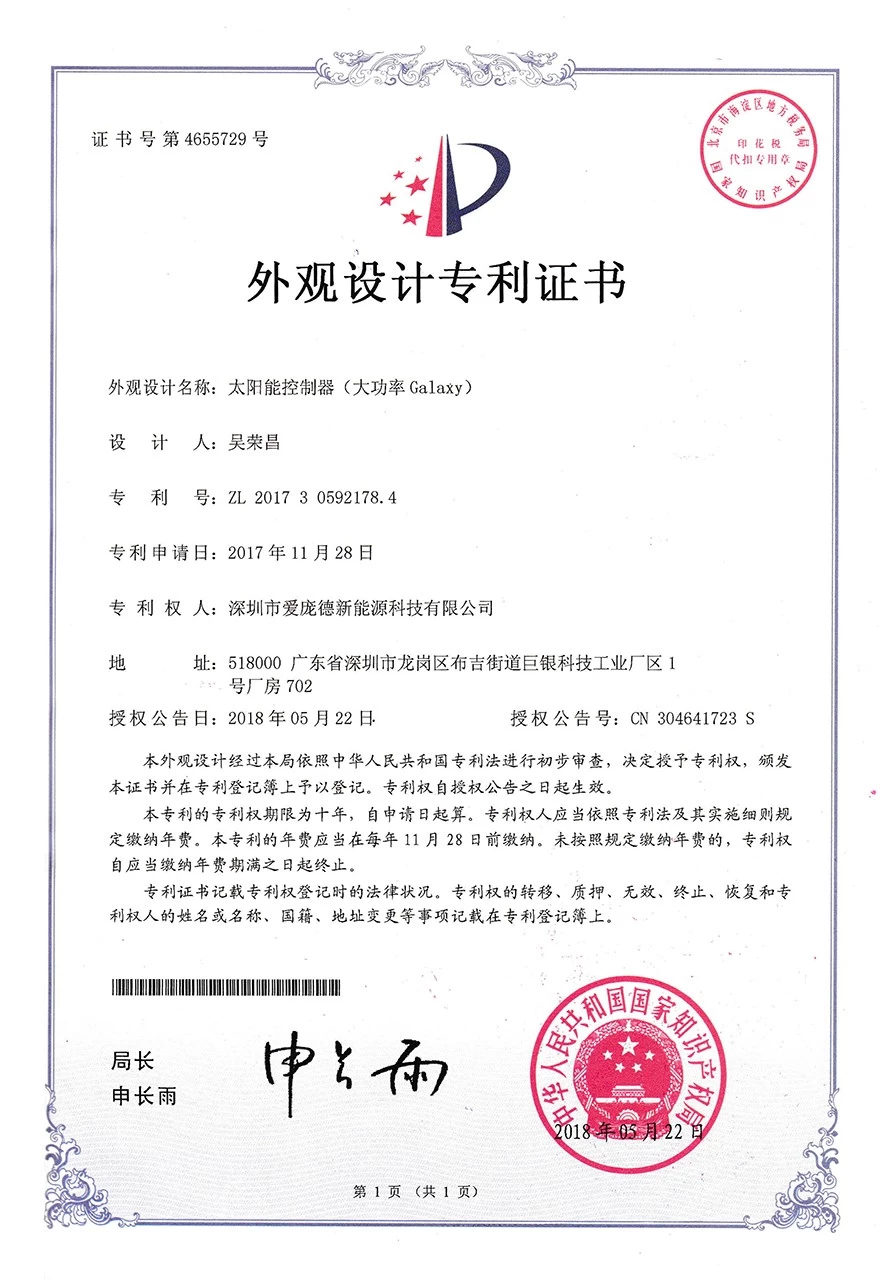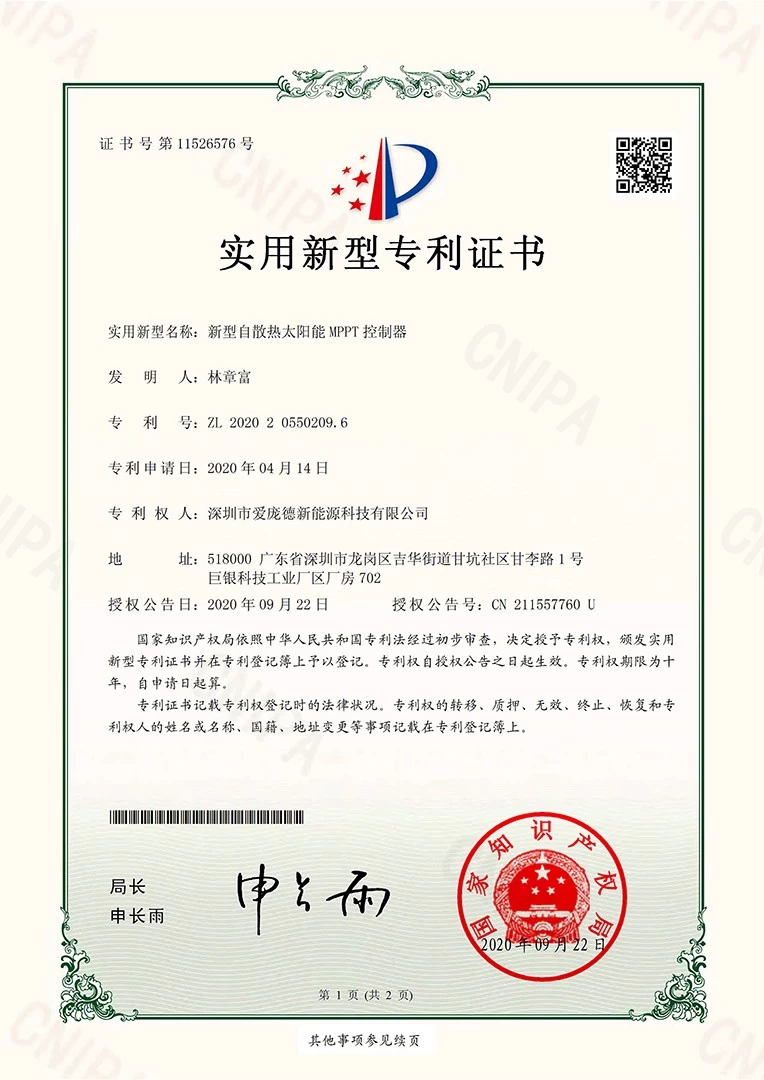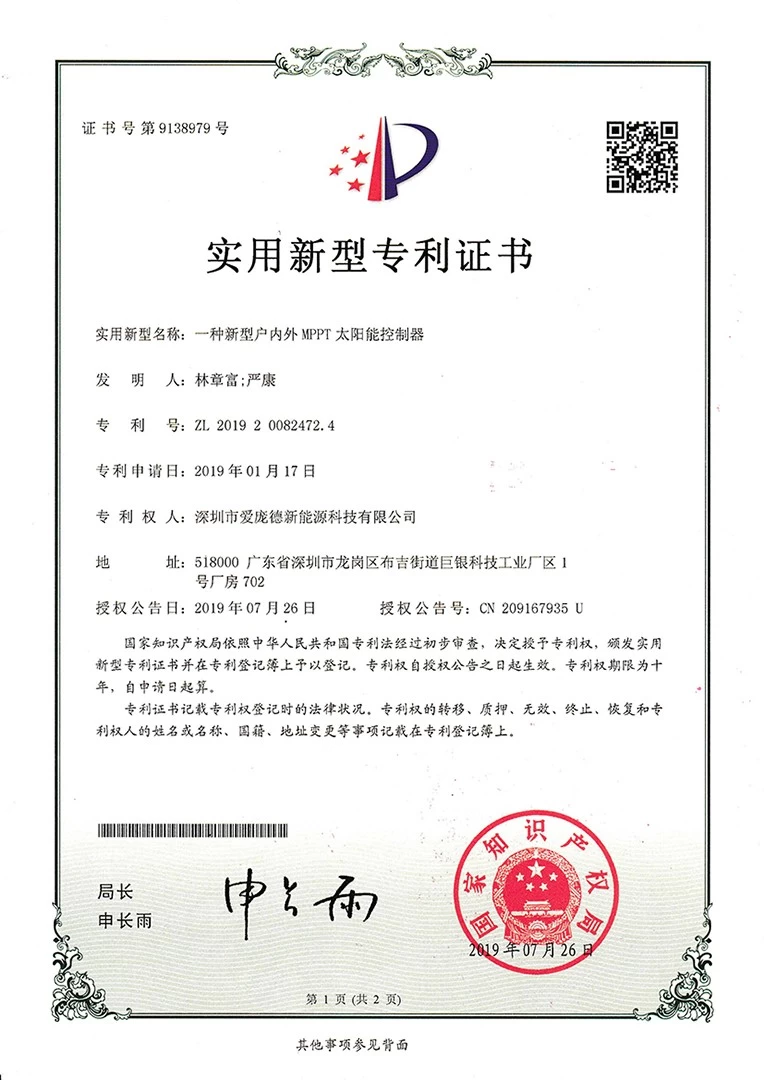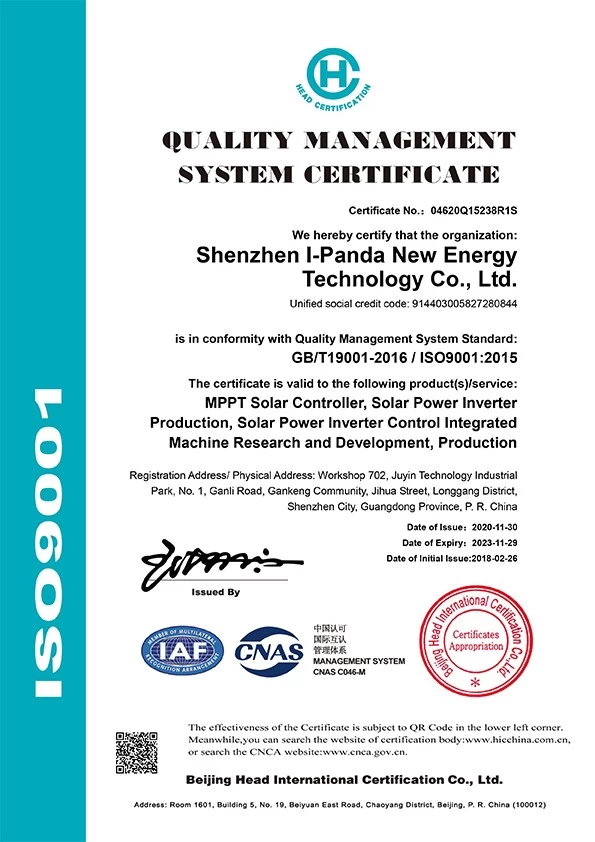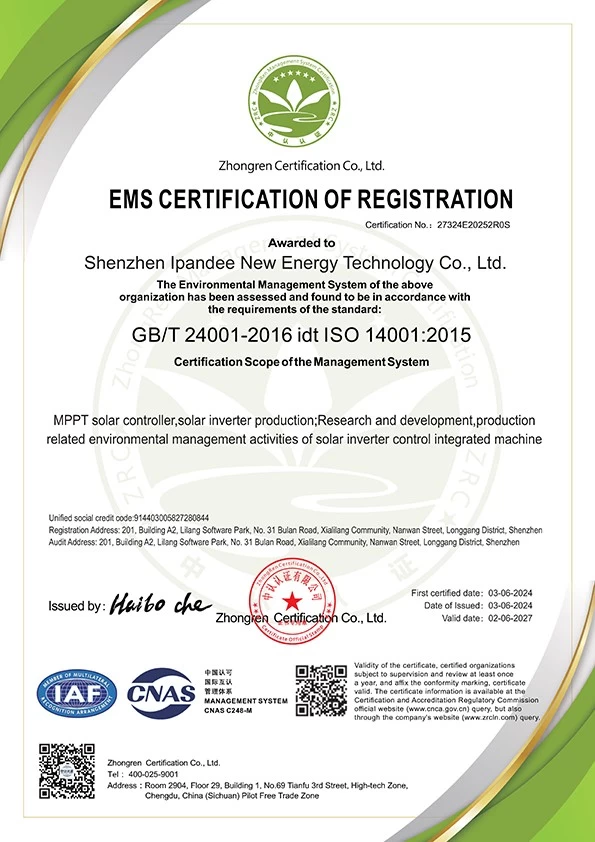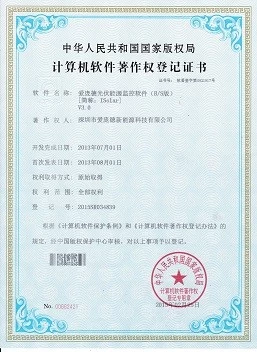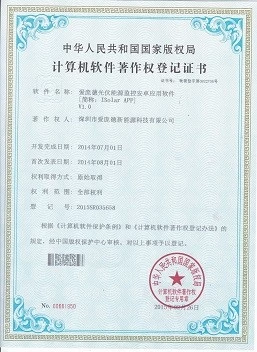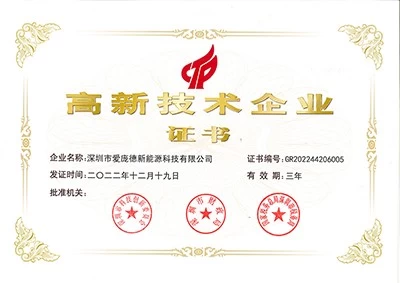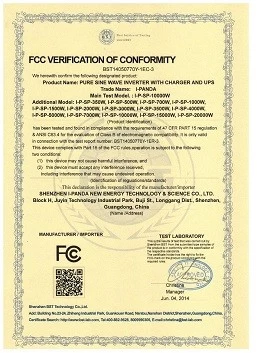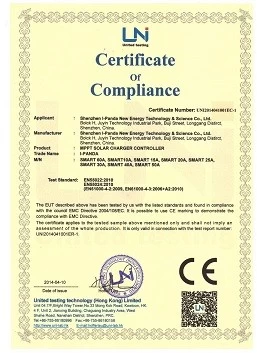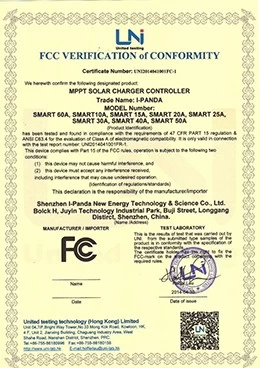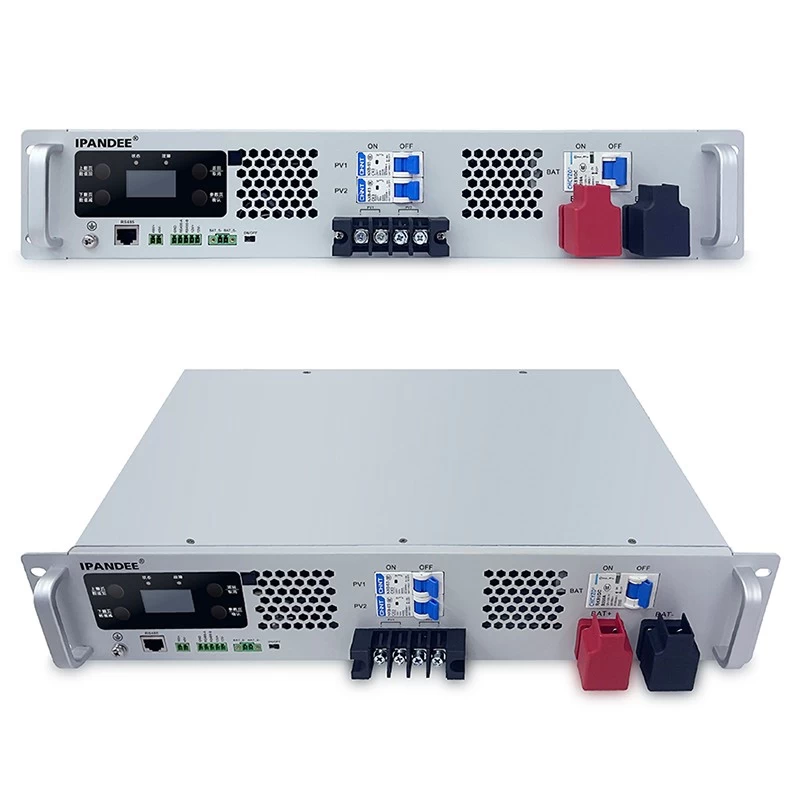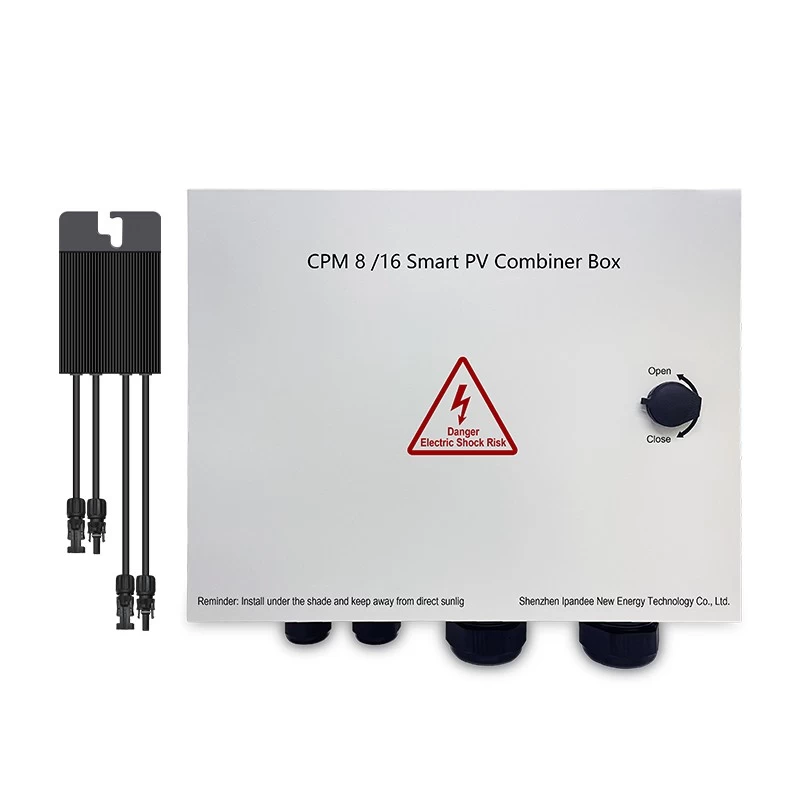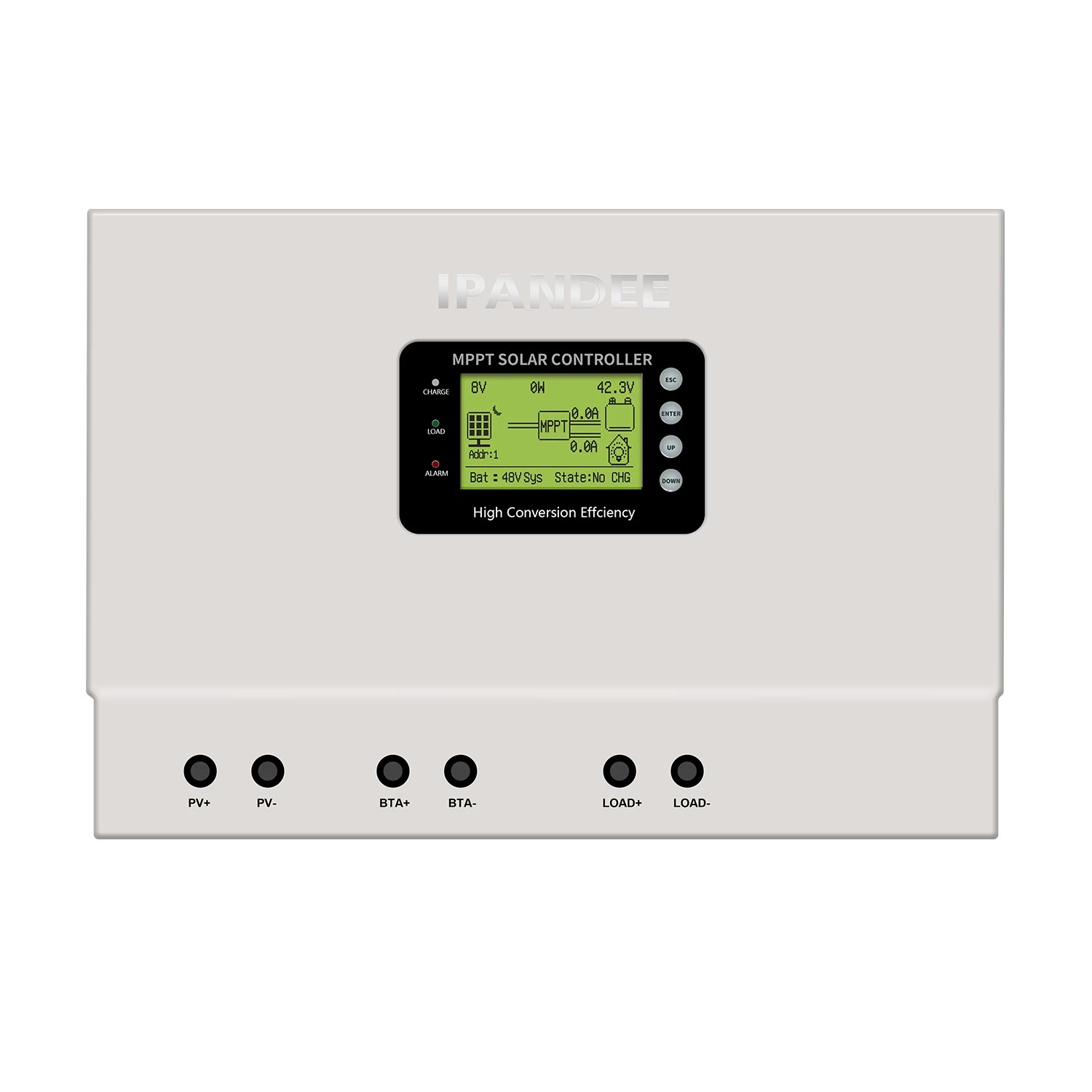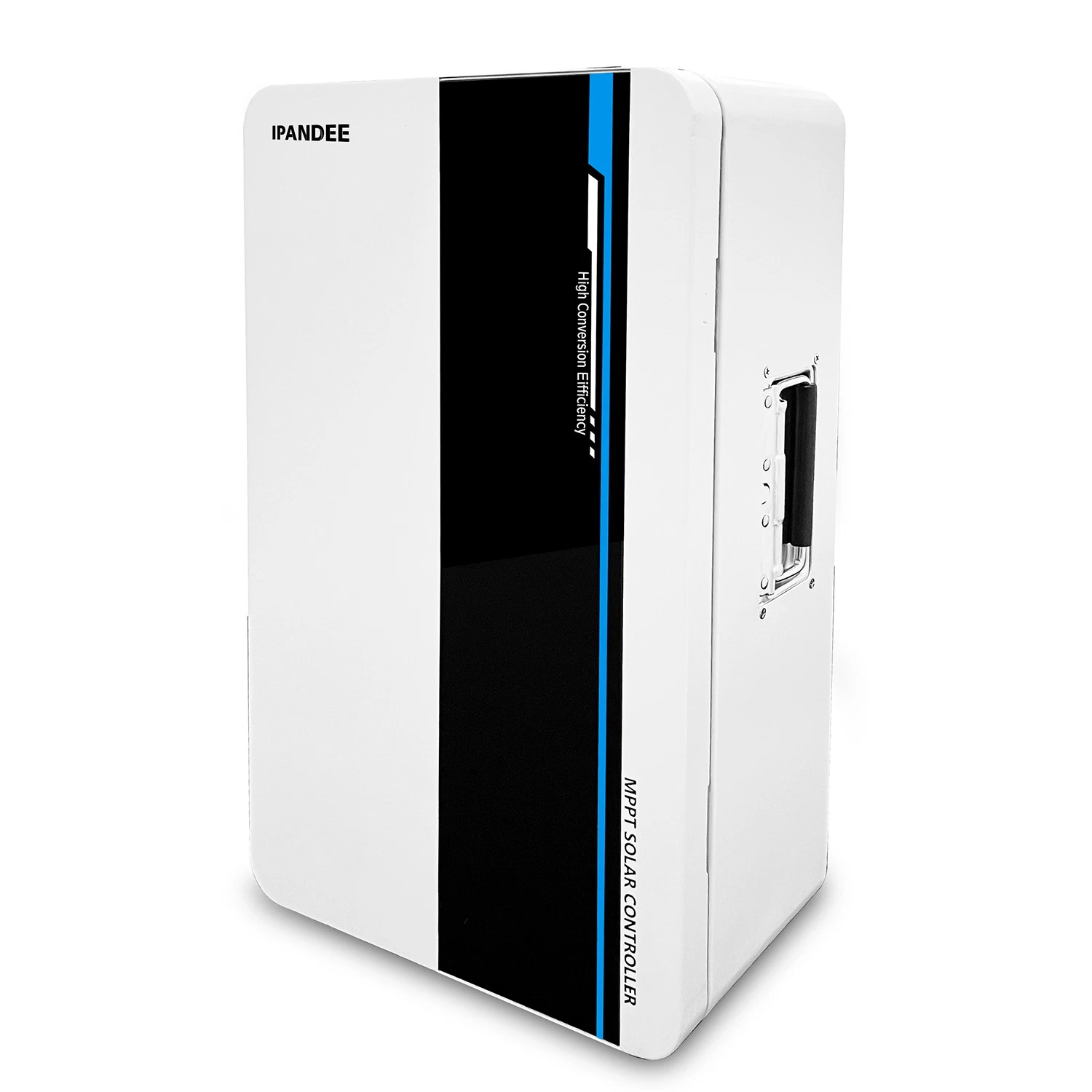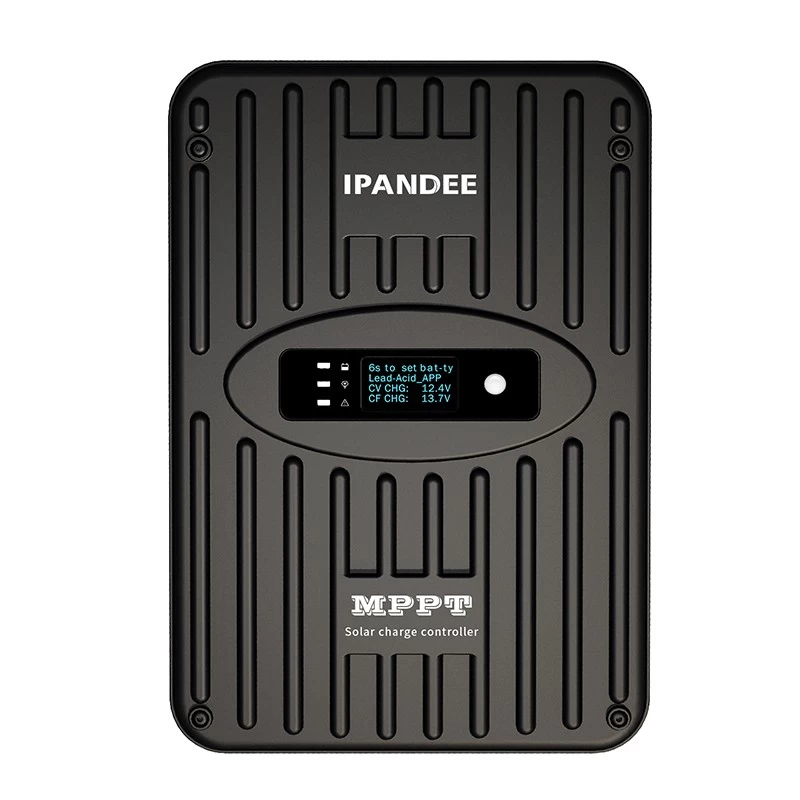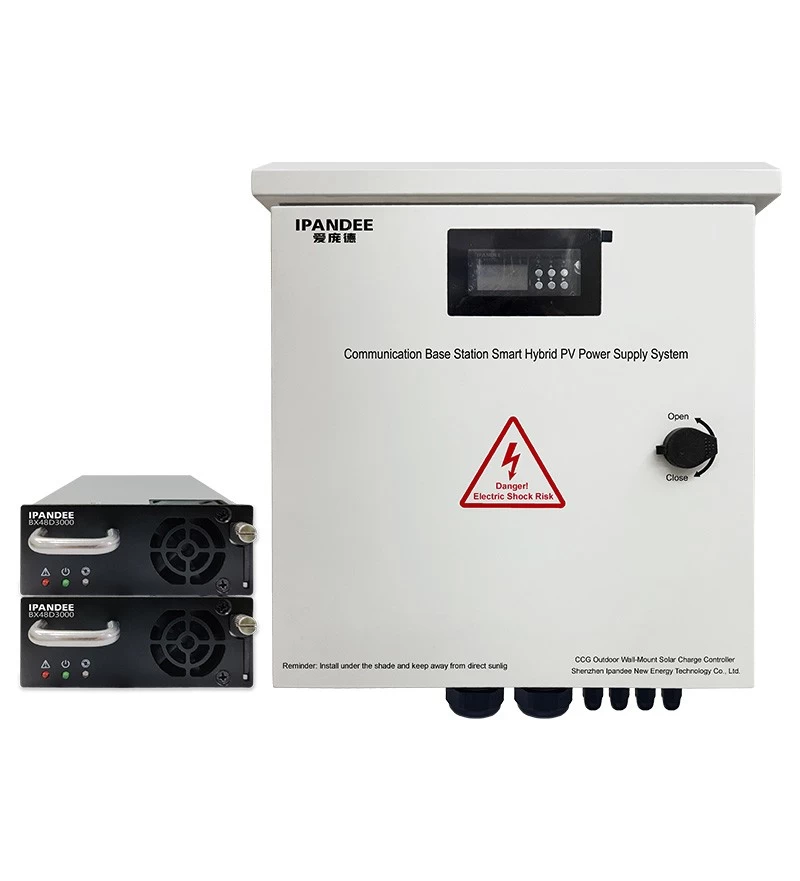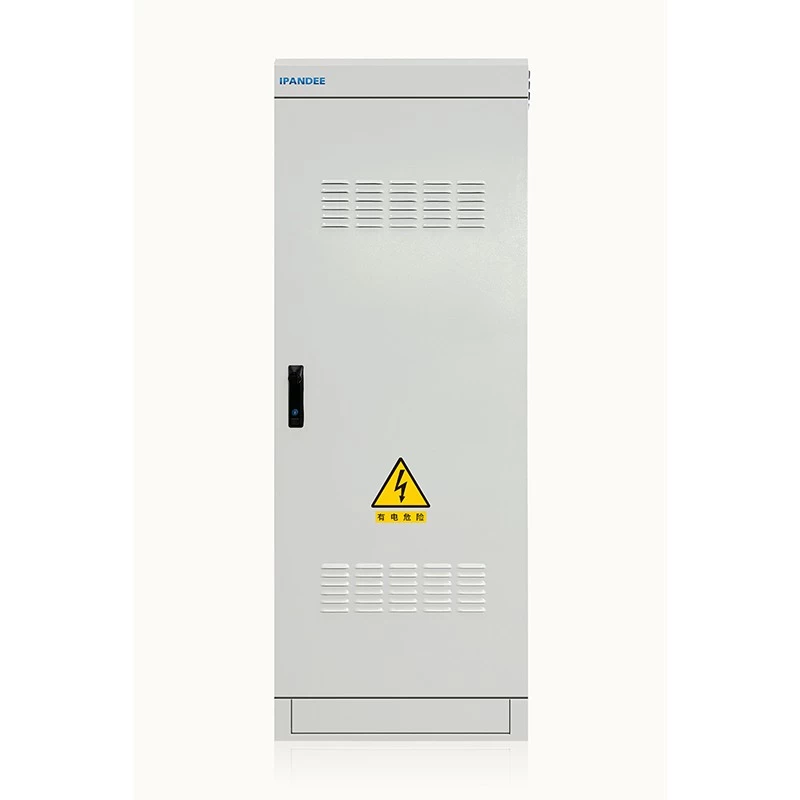Technical requirements and quality of the controller
the Internet
2019-01-18 15:48:48
1. Fully disconnected (HVD) and recovery function
◆ The controller is required to have the input full disconnect and resume connection function.
◆The standard design battery value is: 12V; then the full disconnect and restore connection voltage reference value:
The start-up type lead-acid battery is fully disconnected: 15.0~15.2V; the recovery connection is: 13.7V.
The fixed lead-acid battery is fully disconnected: 14.8 to 15.0V; the recovery connection is: 13.7V.
The sealed lead-acid battery is fully disconnected: 14.1 to 14.5V; the recovery connection is 13.2V.
Note: The pulse width modulation and switching type controllers are mainly different in the design and application of the charging circuit. Therefore, there is no specific connection recovery value requirement in this standard.
◆ Standard indicators are insufficient and there are problems:
(1) Fully disconnected and restored connection should have a certain voltage width, then the connection is only specified, which will bring certain difficulties to circuit design and production;
(2) There are certain deviations between the indicators of the products to be inspected and the standards. The reasons are divided into two aspects:
a. The device used for the reference voltage causes instability or large temperature drift with the voltage comparator. This can result in large differences in measuring the full-break voltage and the recovery charge voltage at different times or at different ambient temperatures.
b When the voltmeter used in the factory inspection is not regularly measured, there is a certain error, which leads to the corresponding error in the parameter setting value before leaving the factory.
2. Temperature compensation
◆ Considering the environmental and battery operating temperature characteristics, the controller should have temperature compensation:
--Because the battery is in the process of charging, a large amount of heat is not easily dissipated in the recombination reaction, which will cause the temperature rise of the battery to be too high, and the electrolyte will dry up, resulting in thermal runaway of the battery.
--The temperature compensation function is mainly to set a more reasonable charging voltage for the battery under different working environment temperatures, to prevent the overcharge or undercharge state from causing the battery charge and discharge capacity to drop prematurely or even prematurely scrapped.
◆ The temperature coefficient is specified in the standard at -3 to 7 mV/°C.
◆ Actual product inspection:
Most of the controllers currently inspected do not have this feature. The main reason for this feature is:
a. The circuit design is slightly complicated;
b. Production costs have increased slightly.
◆ The specific setting of the compensation value should be determined according to the parameters provided by the battery manufacturer;
Whether the setting of the compensation value is reasonable is an important factor related to the length of battery life.
3. No-load loss (quiescent current)
◆ In order to reduce the loss of the controller and improve the conversion efficiency of the photovoltaic power supply, the quiescent current of the controller should be as low as possible.
◆ It is stipulated in the standard that the maximum power consumption of the controller should not exceed 1% of its rated charging current.
◆ Actual product inspection:
The quiescent current exceeds the standard requirements and mainly appears in photovoltaic controllers below 30w/12V. The main reasons for this problem are as follows:
a. There are certain problems in the circuit design, especially in the circuit using the relay, the relay should be prevented from being driven and pulled when the controller is unloaded, otherwise the drive coil of the relay will consume more than ten milliamperes or even tens of milliamps. Current carrying. Design considerations:
(1) The relationship between the control element with a large driving current and the operation of the circuit;
(2) The bias current of each part of the circuit is adjusted to the minimum value to ensure normal operation of the circuit.
b. Selection and procurement of control components in the circuit:
Try to select control components with low drive currents, such as voltage-driven power devices and CMOS circuits, and pay attention to the quality of these components.
4, charge and discharge loop voltage drop
◆ In order to reduce the loss of the controller, the voltage drop of the controller charging or discharging should also be required.
◆ The standard specifies that the voltage drop of the controller charging or discharging should not exceed 5% of the rated voltage of the system.
◆ Actual product inspection:
The voltage drop of the charge and discharge circuit of the controller is too large, and the main problem occurs in the photovoltaic controller with a large rated current. The reasons are as follows:
a. The selection of the reverse isolation device in the charge and discharge circuit is unreasonable. When the charge and discharge current is large, the Schottky diode with a small forward voltage drop should be used as the reverse isolation protection in the charging circuit.
b. There are certain problems in the board soldering process:
(1) The cross-sectional area of the wire passing through a large current is insufficient;
(2) The copper and platinum lines of the circuit board are narrow;
(3) There are different degrees of virtual soldering at high current solder joints;
(4) The fuse in the battery discharge circuit (if a poor quality pipe is selected, a large pressure drop occurs, and the welding of the card seat and the circuit board also produces a large pressure drop).
Disclaimer: The content is partly from the internet. In order to pass on more information, it does not mean agreeing to its views or confirming its description. Article content is for reference only. If there is any infringement, please contact in time.
◆ The controller is required to have the input full disconnect and resume connection function.
◆The standard design battery value is: 12V; then the full disconnect and restore connection voltage reference value:
The start-up type lead-acid battery is fully disconnected: 15.0~15.2V; the recovery connection is: 13.7V.
The fixed lead-acid battery is fully disconnected: 14.8 to 15.0V; the recovery connection is: 13.7V.
The sealed lead-acid battery is fully disconnected: 14.1 to 14.5V; the recovery connection is 13.2V.
Note: The pulse width modulation and switching type controllers are mainly different in the design and application of the charging circuit. Therefore, there is no specific connection recovery value requirement in this standard.
◆ Standard indicators are insufficient and there are problems:
(1) Fully disconnected and restored connection should have a certain voltage width, then the connection is only specified, which will bring certain difficulties to circuit design and production;
(2) There are certain deviations between the indicators of the products to be inspected and the standards. The reasons are divided into two aspects:
a. The device used for the reference voltage causes instability or large temperature drift with the voltage comparator. This can result in large differences in measuring the full-break voltage and the recovery charge voltage at different times or at different ambient temperatures.
b When the voltmeter used in the factory inspection is not regularly measured, there is a certain error, which leads to the corresponding error in the parameter setting value before leaving the factory.
2. Temperature compensation
◆ Considering the environmental and battery operating temperature characteristics, the controller should have temperature compensation:
--Because the battery is in the process of charging, a large amount of heat is not easily dissipated in the recombination reaction, which will cause the temperature rise of the battery to be too high, and the electrolyte will dry up, resulting in thermal runaway of the battery.
--The temperature compensation function is mainly to set a more reasonable charging voltage for the battery under different working environment temperatures, to prevent the overcharge or undercharge state from causing the battery charge and discharge capacity to drop prematurely or even prematurely scrapped.
◆ The temperature coefficient is specified in the standard at -3 to 7 mV/°C.
◆ Actual product inspection:
Most of the controllers currently inspected do not have this feature. The main reason for this feature is:
a. The circuit design is slightly complicated;
b. Production costs have increased slightly.
◆ The specific setting of the compensation value should be determined according to the parameters provided by the battery manufacturer;
Whether the setting of the compensation value is reasonable is an important factor related to the length of battery life.
3. No-load loss (quiescent current)
◆ In order to reduce the loss of the controller and improve the conversion efficiency of the photovoltaic power supply, the quiescent current of the controller should be as low as possible.
◆ It is stipulated in the standard that the maximum power consumption of the controller should not exceed 1% of its rated charging current.
◆ Actual product inspection:
The quiescent current exceeds the standard requirements and mainly appears in photovoltaic controllers below 30w/12V. The main reasons for this problem are as follows:
a. There are certain problems in the circuit design, especially in the circuit using the relay, the relay should be prevented from being driven and pulled when the controller is unloaded, otherwise the drive coil of the relay will consume more than ten milliamperes or even tens of milliamps. Current carrying. Design considerations:
(1) The relationship between the control element with a large driving current and the operation of the circuit;
(2) The bias current of each part of the circuit is adjusted to the minimum value to ensure normal operation of the circuit.
b. Selection and procurement of control components in the circuit:
Try to select control components with low drive currents, such as voltage-driven power devices and CMOS circuits, and pay attention to the quality of these components.
4, charge and discharge loop voltage drop
◆ In order to reduce the loss of the controller, the voltage drop of the controller charging or discharging should also be required.
◆ The standard specifies that the voltage drop of the controller charging or discharging should not exceed 5% of the rated voltage of the system.
◆ Actual product inspection:
The voltage drop of the charge and discharge circuit of the controller is too large, and the main problem occurs in the photovoltaic controller with a large rated current. The reasons are as follows:
a. The selection of the reverse isolation device in the charge and discharge circuit is unreasonable. When the charge and discharge current is large, the Schottky diode with a small forward voltage drop should be used as the reverse isolation protection in the charging circuit.
b. There are certain problems in the board soldering process:
(1) The cross-sectional area of the wire passing through a large current is insufficient;
(2) The copper and platinum lines of the circuit board are narrow;
(3) There are different degrees of virtual soldering at high current solder joints;
(4) The fuse in the battery discharge circuit (if a poor quality pipe is selected, a large pressure drop occurs, and the welding of the card seat and the circuit board also produces a large pressure drop).
Disclaimer: The content is partly from the internet. In order to pass on more information, it does not mean agreeing to its views or confirming its description. Article content is for reference only. If there is any infringement, please contact in time.





